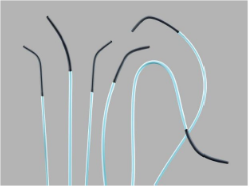
Cook Beacon Tip 5.0 Fr Angiographic Catheter
Cook Medical has initiated a Class I recall—the most serious type—of its Beacon Tip 5.0 Fr Angiographic Catheters following reports of tip separation during use, posing potentially fatal risks such as embolism, thrombosis, sepsis, and cardiac arrhythmia. The US FDA flagged the recall on grounds that continued use of the affected devices may result in serious injury or death.
Device: Cook Beacon Tip 5.0 Fr Angiographic Catheter
Recall Type: Class I (highest severity)
Initiation Date: 15 May 2025
Reported Cases: 3 serious injuries, 0 deaths
Action Required: Immediate quarantine, cessation of use, and downstream communication
Affected users were alerted through an urgent medical device recall letter, instructing them to identify, isolate, and halt the use or distribution of any affected stock. The notice also stresses internal and external dissemination to all user-level personnel or institutions where these devices may have been transferred.
The recall was prompted by multiple field complaints of catheter tip separation, occurring both during preparation and active use. In such critical interventional procedures, fragmentation of device components can trigger severe patient outcomes, including:
Catheter embolization
Vascular perforation or obstruction
Sepsis and systemic infection
Irregular heart rhythms
Mortality risk
Such device failure during angiographic procedures—where precision and reliability are paramount—can exacerbate an already vulnerable patient’s condition, making rapid regulatory and clinical response crucial.
The Beacon Tip Catheters are widely employed in vascular imaging, particularly in identifying structural abnormalities or blockages within blood vessels. Their smooth navigation and radiopaque tips aid real-time procedural accuracy. However, the risk of device fragmentation inside the vasculature shifts the safety-benefit equation significantly, mandating the withdrawal of all affected units.
Cook’s decision to proactively remove these devices underscores a growing industry emphasis on post-market surveillance and field performance feedback. The recall also raises broader questions about the robustness of device tip bonding and fatigue testing under procedural stress conditions.
In the current environment where medical device companies face increasing scrutiny over safety and usability, this case highlights the need for:
Stricter preclinical durability assessments
Enhanced failure mode risk profiling
Transparent real-time communication from manufacturers to healthcare providers
As regulators continue to monitor Cook’s remediation and communication measures, healthcare systems using these catheters must ensure traceability, inventory control, and staff awareness to minimise inadvertent use. Meanwhile, the clinical community awaits updates on Cook’s investigation outcomes and whether long-term design changes will be introduced